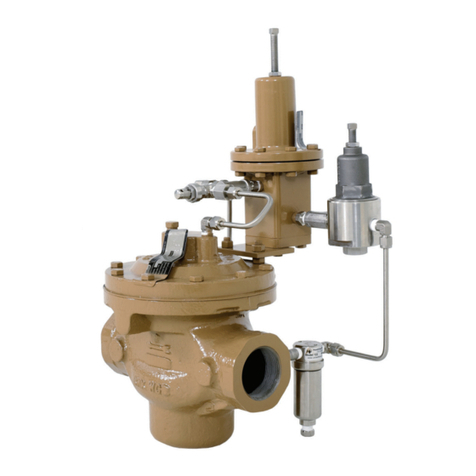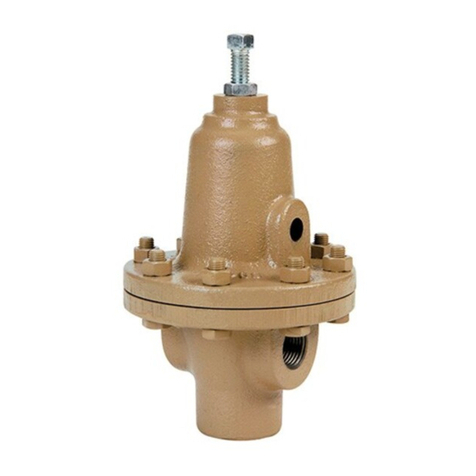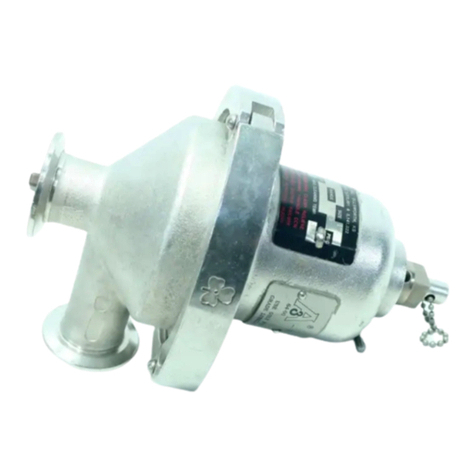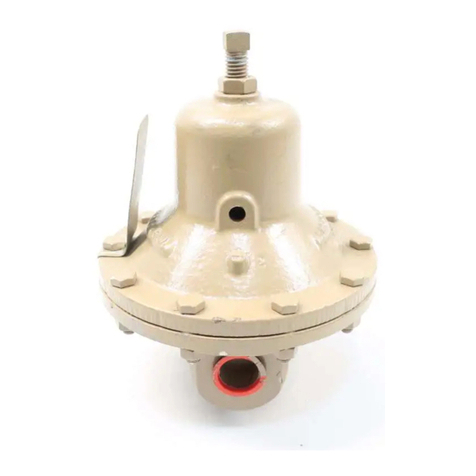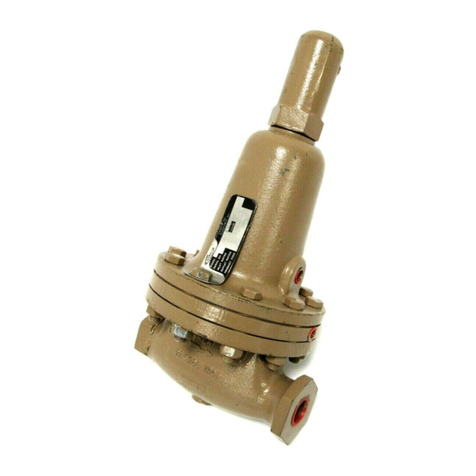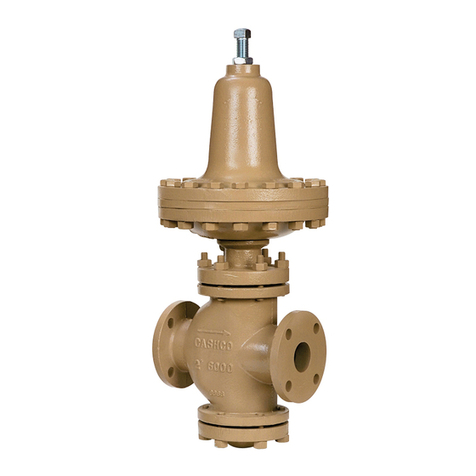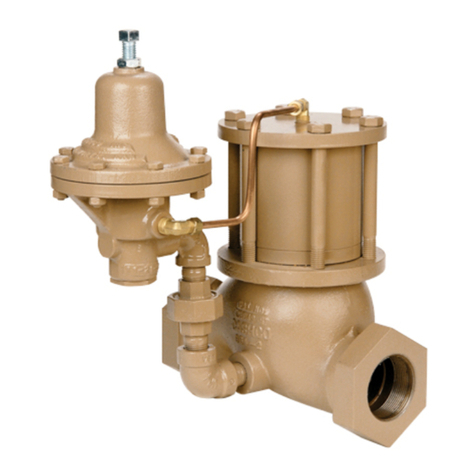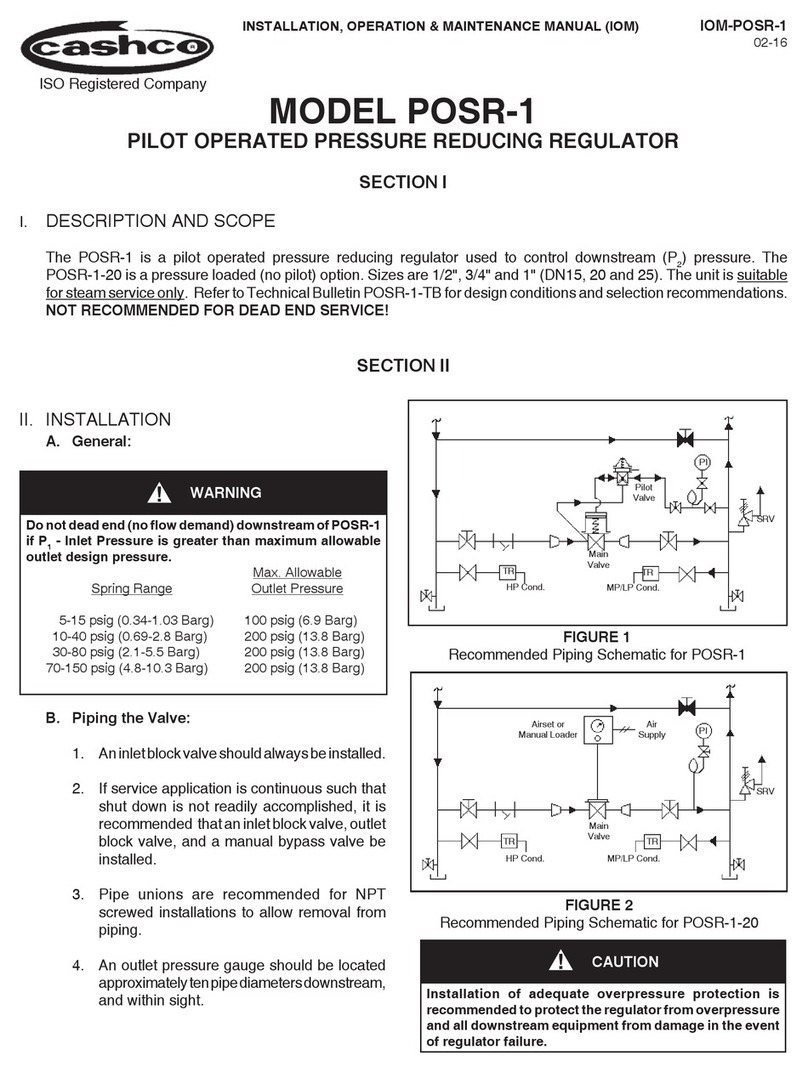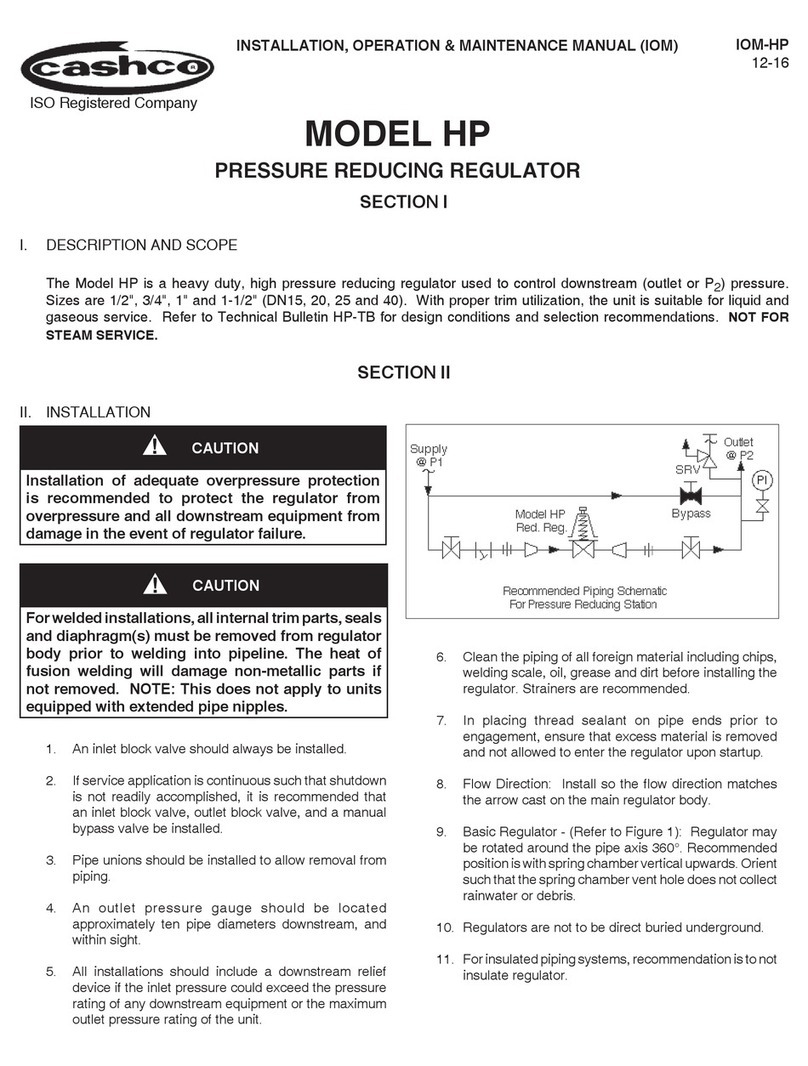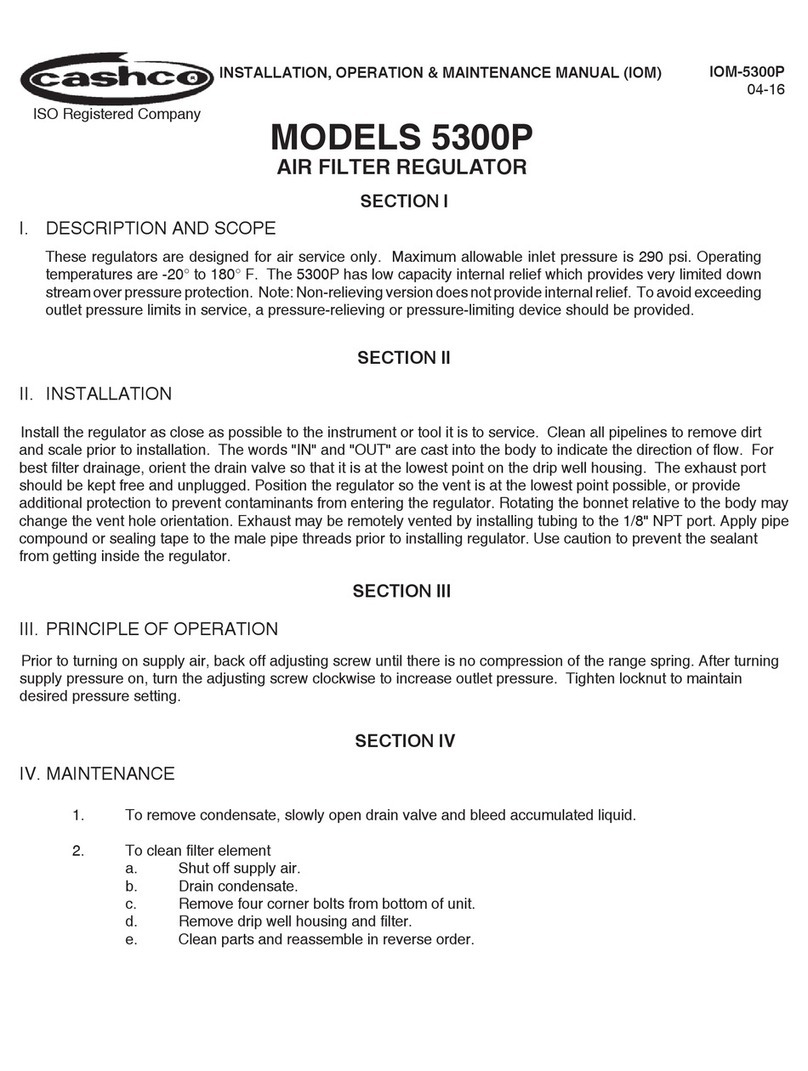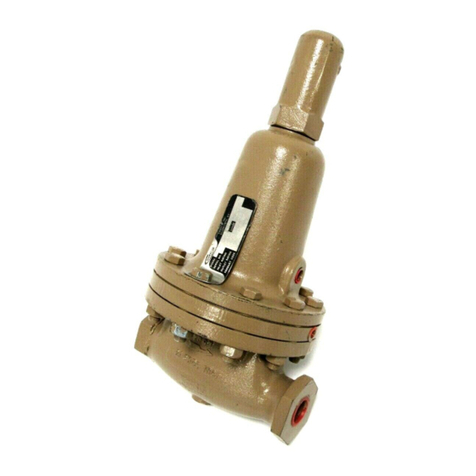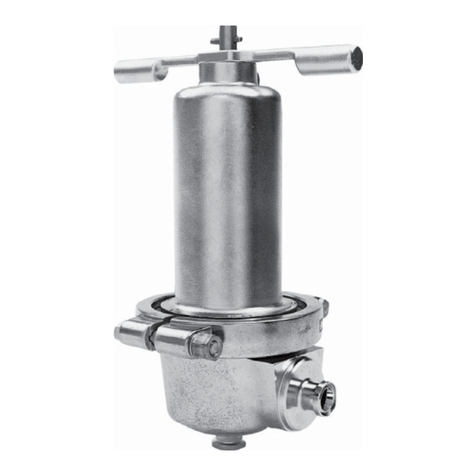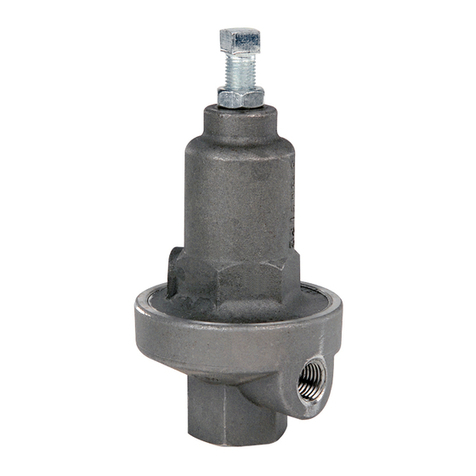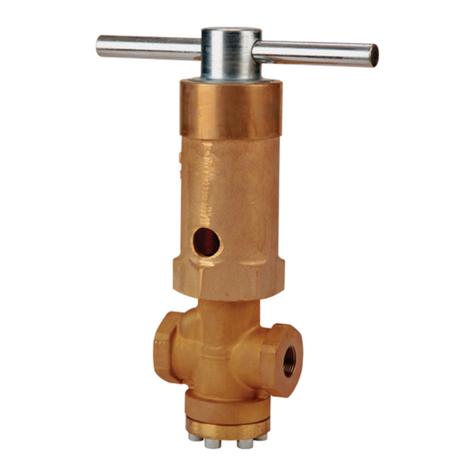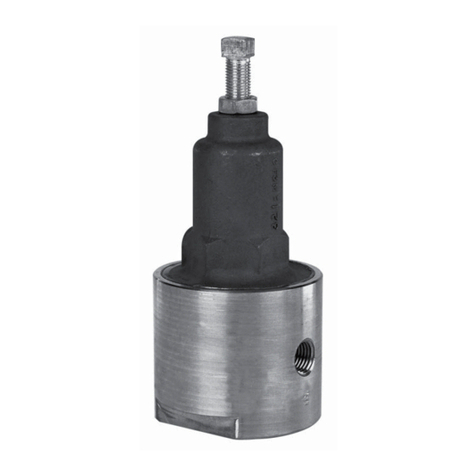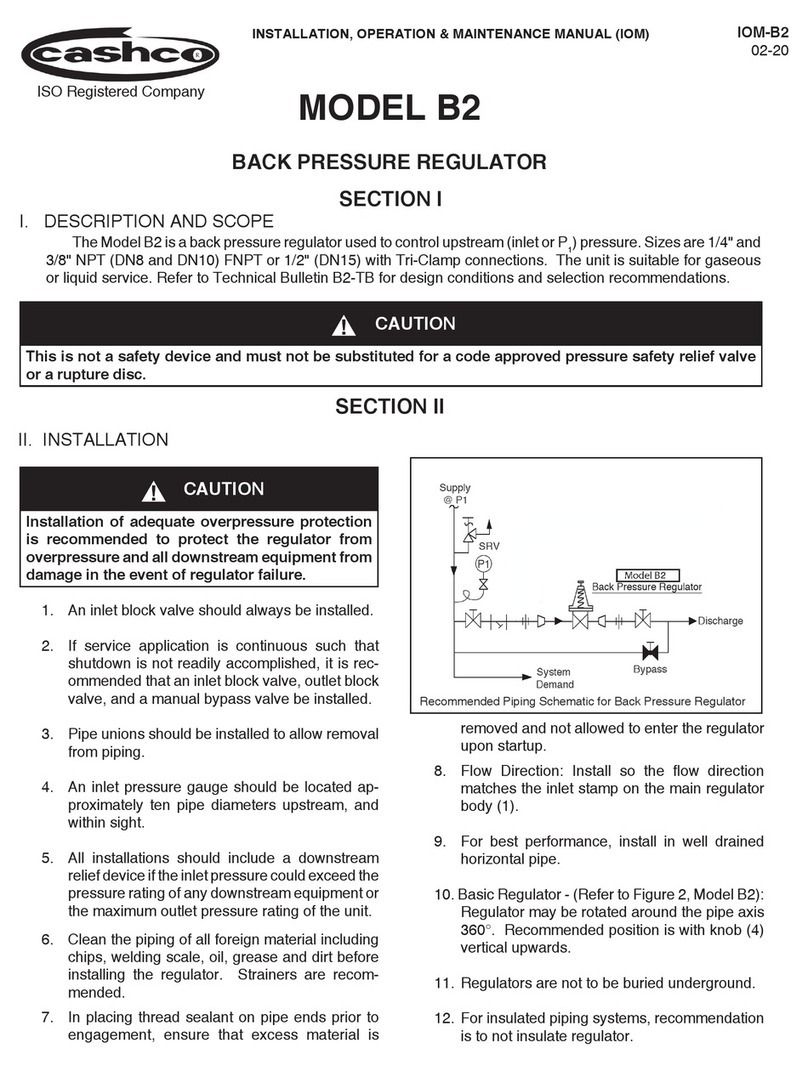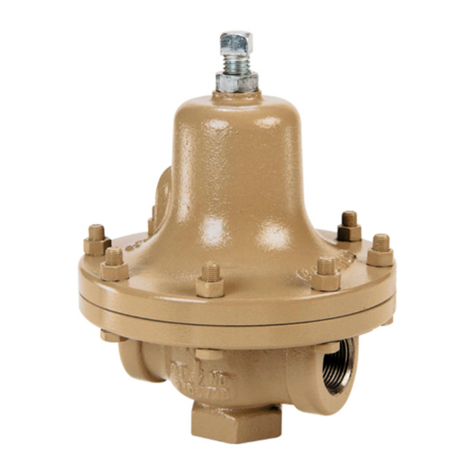
IOM-P34
8. Inspect and replace any necessary parts.
NOTE: Use only parts manufactured and
supplied by Cashco, Inc. for these products.
See Section VIII.
9. Reassemble diaphragm subassembly (7) by
placing the actuator gasket (7.4), diaphragm
(7.1), and actuator o-ring (7.5) over the
threads of the actuator post (7.2). NOTE: Use
the thickest of the two diaphragms (7.1) for
1st Stage diaphragm subassembly (7). Place
a thread sealant compound on the threads of
the actuator post (7.2) prior to installing the
actuator nut (7.3). Install actuator nut (7.3)
and tighten to the following torque value: 15
Ft-lbs (20 Nm).
10. Place the 1st stage diaphragm gasket (10)
onto the body (1) diaphragm flange area.
Place 1st stage diaphragm subassembly (7)
on top of the gasket (10).
11. Lubricate the threads of the body (1) with
a lightweight grease that is compatible with
service use. Rotate the spring chamber (6)
CW by hand onto the threaded portion of
the body (1) until firmly seated against the
diaphragm gasket (10). Tighten to the follow-
ing torque value: 65–70 Ft lbs (88–95 Nm).
12. Recalling height value of C.2, rotate adjust-
ing screw (2) CW to compress spring (15) to
factory established pressure set point. Hand
tighten acron nut (4) on adjusting screw (2).
12. Invert the body (1). Repeat Steps 9 thru 11
for 2nd stage diaphragm subassembly (7).
13. Pressurize with air and spray liquid leak de-
tector around body (1) and spring chambers
(6) to test for leakage. Ensure that an outlet
pressure is maintained during this leak test
of at least mid-range spring level; i.e. 2-100
psig (.14-6.9 Barg) range spring, 51 psig
(3.5 Barg) test pressure minimum.
D. Trim (Seat) Replacement:
1. Remove spring chamber subassemblies and
diaphragm subassemblies per Section VI.
Steps B and C.
2. Remove seat retainers (13) by rotating seat
CCW.
3. Remove poppets (8) and poppet springs (9).
4. Clean debris from within the body (1) cavity.
Clean all parts to be reused according to
owner's procedures.
NOTE: On regulators originally supplied as “oxy-
gen clean”, Option-M, maintenance must in-
clude a level of cleanliness equal to Cashco's
cleaning standard #S-1134. Contact factory
for details.
5. Inspect all parts for damage and replace if
necessary. NOTE: Use only parts manufac-
tured and supplied by Cashco, Inc. for these
products. See Section VIII.
6. Place the 1st stage poppet spring (9) into
body (1) cavity.
7. Place poppet (8) inside the poppet spring
(9). NOTE: The angled seating surface of
the poppet (8) must face up toward the seat
(12).
8. Install new seat retainer (13) with seat (12)
into body (1) cavity with the seat facing down-
ward toward the angled seating surface of the
poppet (8). Tighten seat retainer (13) to the
following torque value: 12 – 15 Ft-lbs (16 – 20
Nm).
9. Reinstall the 1st stage diaphragm subassem-
bly (7) and spring chamber subassembly(2)
per Section VI, Steps B and C.
10. Invert the body (1) and repeat Steps 6 thru 9
for the 2nd stage reassembly.
11. Bench test unit for suitable operation. NOTE:
Regulators are not tight shutoff devices.
Even if pressure builds up beyond set point,
a regulator may or may not develop bubble
tight shutoff.
12. Pressurize with air and spray liquid leak de-
tector around body (1) and spring chambers
(2.1) to test for leakage. Ensure that an outlet
pressure is maintained during this leak test
of at least mid-range spring level; i.e. 2-100
psig (.14-6.9 Barg) range spring, 51 psig
(3.5 Barg) test pressure minimum.
